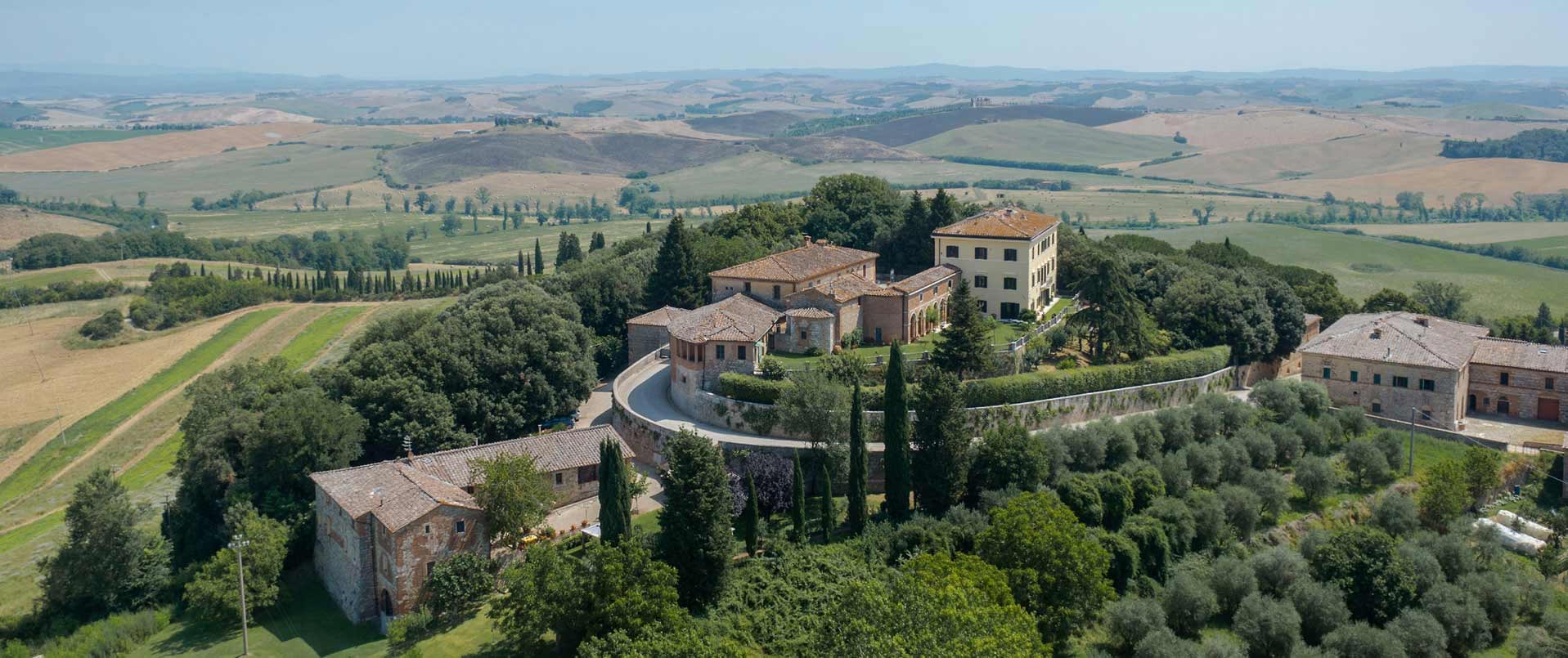
The Palazzo di Transo is an ancient residence dating back to the 15th century, which has undergone successive expansions and downsizing over time. Located in the medieval quarter of Sessa Aurunca close to the Romanesque Cathedral of Saints Peter and Paul, it is adjacent to the Church of S. Giovanni a Piazza, which previously could be directly accessed from the main building. Still visible in the church today is a small chapel, where the Transo family used to be able to attend religious services right up until the 1960s.
A small courtyard opening onto Corso Lucilio and a late 16th-century portal lead into a large, partially covered atrium where a 3rd-century AD sarcophagus, found on the Le Vagnole estate, was placed in the 1800s. The former stables and two 18th-century gates to the converted outbuildings, now used as commercial shops, open onto the atrium. A short flight of steps leads to the kitchen, the woodshed, which has now been converted, and the cistern below. The latter, excavated in Roman times, consists of a series of rooms where water reserves were kept in ancient times. Currently, the premises are used as cellars. A further staircase leads to the well-preserved 19th-century ‘piano nobile’ noble floor, which has been undergone excellent restoration work.
The family’s historical archive, which has been certified by the Office for the Protection of Historical and Archival Heritage, is housed on the upper floor. Due to its size and the importance of the preserved documents, it is considered by scholars in the field to be one of the largest privately owned parchment collections and is without doubt a unique case in Southern Italy. There is also a nymphaeum grotto in the citrus grove, believed to have been built at the end of the 16th century and considered “extraordinarily suggestive, thanks to the particular use of volcanic tuff and plaster imitating Roman masonry”. (1)
Private events
This truly charming residence is the perfect place to hold all manner of celebrations and events, such as weddings, receptions, conferences, exhibitions and cultural events. There is ample seating for 120 people outdoors and 100 indoors.
Accommodation
The property offers Bed & Breakfast accommodation with 3 comfortable double bedrooms with en-suite bathrooms within the Palazzo itself, making it an ideal location for a suggestive stay in the historic centre of Sessa Aurunca.
Corporate events and conferences
Palazzo di Transo is an excellent choice for companies interested in organising meetings and conferences in an elegant setting.
Concerts featuring chamber music are also held at the Palazzo.
The history of Palazzo di Transo
Scriptures, monuments, tombstones, archival documents, as well as numerous writers and historians, both ancient and modern, all provide information about the ancient origins of the Transo family. Its most illustrious members, including its founder Bonomolo, held prestigious positions and served at the courts of Charles I, Robert and Joanna I of Anjou, Ferdinand I, Alfonso II, Frederick of Aragon and Emperor Charles V. The same sources attest that a branch of the Transo family, which emigrated to France in the early Middle Ages, gave rise to the distinguished de Villeneuve family, who were credited with having given the Church the blessed Rozellina of the Cistercian Order and the Sovereign Military Order of the Knights of Malta Eleon, Grand Master in Rhodes.
The Transo family originates from Provence and was named after the Signoria or Lordship of Tramps near Marseille. Amilcare, commander of a thousand Provençal knights, led his family to Naples in the wake of Charles I of Anjou (1226-1285). It was during the reign of Queen Joanna I (1327-1382) that Bello di Transo, together with Nicolò Toraldo, was appointed to govern the town of Sessa. Bonomolo di Transo, progenitor of the present Transo family, General Captain of the galleys of Gaeta and President of the Royal Chamber, was a State Councillor and member of the household of Queen Joanna II (1373-1435) and King Alfonso I of Aragon (1481-1500), to whom he lent a substantial sum of money. When Charles VIII, King of France (1470-1498), took and looted Gaeta, members of the Transo family distinguished themselves by being the leading defenders of the city. Twenty-two of them lost their lives in battle. The only survivor was Bonomolo, who settled in Sessa in 1495 after marrying into the Marzano family, then the Dukes of Sessa.
Giovan Francesco was a cavalry captain of Emperor Charles V (1500-1558). At that time, the di Transo family wore the robes of the Sovereign Military Order of Malta (1502). Monuments of the Transo family can be found in Naples in the churches of SS. Annunziata and della Sapienza, in the Cathedral, the churches of Carmine, S. Antonio and S. Domenico and the city’s main gates in Sessa Aurunca, as well as in the church of S. Francesco in Gaeta. This family was also granted noble status or Seats (‘Sedile’) in the city of Naples, holding important administrative positions in Capuana, Nido, Montagna (conferred to Bonomolo on 29 August, 1432) and Porto, and likewise in San Matteo at Sessa and at the Sedile Portercole at Tropea. They also occupied Seats in the cities of Gaeta, Messina and Nicotera, and in France and England. In Gaeta, the Transo family commissioned the Church of San Teodoro, now named the Church of Sant’Angelo.
The Transo family owned numerous fiefdoms, including the County of Avellino, the Duchies of Corigliano, Precacuore, and S. Agata in 1614, and the Principality of Casoleto in 1701. For further information about the Transo family, whose patrician and feudal nobility is widely recorded, please consult the many documents collated in the major historical, heraldic and genealogical works about the Kingdom of Naples.
 Accommodation
Accommodation
 Co-Working
Co-Working
 Film sets
Film sets
 Gardens
Gardens
 Private events
Private events
 Residences
Residences
 Visits
Visits
 Weddings
Weddings
 Cultural tourism
Cultural tourism  Gardens
Gardens  Historic Homes open to visitors
Historic Homes open to visitors